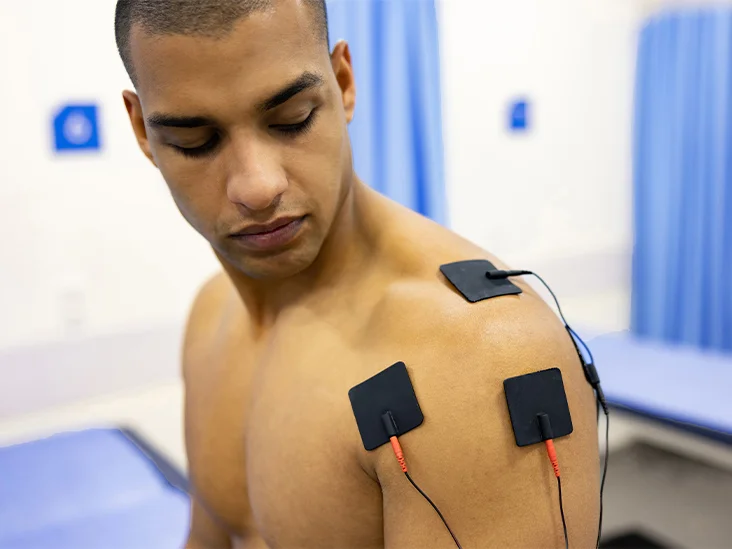![]() +971 6 522 6368
+971 6 522 6368 ![]() +971-56-994-6523
+971-56-994-6523 ![]() info@resalahphysio.com
info@resalahphysio.com
Electrotherapy
Electrotherapy, also known as electro physiotherapy or electrical stimulation, is a therapeutic treatment that uses electrical currents to stimulate nerves and muscles. It has been employed in physiotherapy for various purposes, including pain management, muscle rehabilitation, and the treatment of certain medical conditions. Here are some common forms of electrotherapy used in physiotherapy:
Transcutaneous Electrical Nerve Stimulation (TENS): TENS is a widely used method for pain relief. It involves the use of a small, battery-operated device that delivers low-voltage electrical currents to the skin, which can help in reducing pain perception.
Interferential Current (IFC): IFC uses two medium-frequency currents that intersect and interfere with each other. This interference creates a modulating, low-frequency current that can penetrate deeper into tissues, making it useful for pain relief and reducing muscle spasms.
Galvanic Stimulation (GS): This involves the use of direct current (DC) to stimulate nerves and muscles. It is often used for reducing edema (swelling), promoting blood flow, and managing acute pain.
Ultrasound Therapy: While not strictly electrical, ultrasound therapy uses sound waves to stimulate healing in the body. It is often used to promote tissue repair, reduce inflammation, and alleviate pain.
Neuromuscular Electrical Stimulation (NMES): This technique involves using electrical stimulation to induce muscle contractions. It is commonly used in rehabilitation settings to prevent muscle atrophy and improve muscle strength in individuals who may have difficulty with voluntary muscle activation.
Pulsed Electromagnetic Field (PEMF) Therapy: PEMF involves the use of electromagnetic fields to stimulate cells and promote healing. It has been used in various medical applications, including bone healing and pain management.

